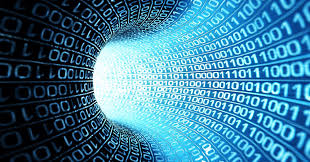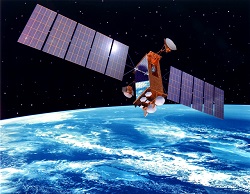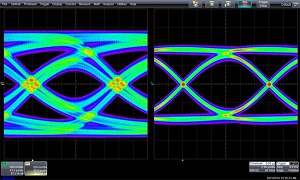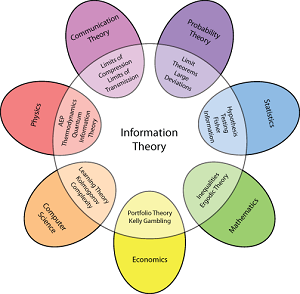In the University of Peloponnese, Dr. Sagias has taught the following postgraduate courses:
Digital Communications and Signal Processing
Digital Communications and Signal Processing
MSc Program: Modern Wireless Communications

Category: Mandatory
Academic Years: 2018-today
ECTS Credits: Six (7.5)
Semester: First (1st)
Teaching: Four (4) hours lectures.
Learning outcomes: At the end of the course the student will be able to:
- explain the sampling process
- identify the differences between ideal and practical sampling process
- explain quantization techniques and encoding methods
- design of PCM systems of specific characteristics
- identify baseband modulation techniques and waveforms
- design the optimum receiver
- identify passband modulations (ASK, PSK, FSK)
Course contents: Continuous and discrete time linear systems, frequency domain, convolution, filters, stochastic signals, fast Fourier transform, analog-to-digital conversion, digital transmission, baseband systems,binary and multilevel PAM and PPM systems, bit error probability calculation, performance analysis, digital signals spectra, signals geometric representation, matched filters, correlators, detectors, intersymbol interference (ISI, equalizers) and noise. Digital data transmission through carrier modulation, binary and multilevel ASK, FSK, PSK and DPSK modulations, ideal receivers and performance comparison, power and bandwidth requirements. Elements of sampling theory, quantization methods and coding. PCM, DPCM and delta modulation systems, TDM multiplexing. Noise theory. Linear and non-linear equalizers, mean-square error filters, Viterbi algorithm. For the lab of the course, the Simulink software of Matlab is used.
Assessment: Written exams at the end of the semester and four (4) laboratory assignments in GNU Octave and GNU Radio. The total mark will be formed with a percentage 70% by theory and 30% by assignments.
Bibliography:
- B. P. Lathi and Zhi Ding, Modern Digital and Analog Communication, 5th edition, Oxford University Press, Feb. 2018.
- J. G. Proakis and M. Salehi, Communication systems engineering, 2nd edition, Prentice Hall, 2001.
- S. Haykin, Communication systems, 4th edition, Wiley, 2000.
- T. Rappaport, Wireless communications: Principles and practice, 2nd edition, Prentice Hall, 2002.
Digital Communications
Digital Communications
MSc Program: Advanced Telecommunications Systems and Networks

Category: Mandatory
Academic Years: 2009-2018
ECTS Credits: Six (6)
Semester: First (1st)
Teaching: Four (4) hours lectures.
Learning outcomes: At the end of the course the student will be able to:
- explain the sampling process
- identify the differences between ideal and practical sampling process
- explain quantization techniques and encoding methods
- design of PCM systems of specific characteristics
- identify baseband modulation techniques and waveforms
- design the optimum receiver
- identify passband modulations (ASK, PSK, FSK)
Course contents: Digital transmission, baseband systems, binary and multilevel PAM and PPM systems, bit error probability calculation, performance analysis, digital signals spectra, signals geometric representation, matched filters, correlators, detectors, intersymbol interference (ISI, equalizers) and noise. Digital data transmission through carrier modulation, binary and multilevel ASK, FSK, PSK and DPSK modulations, ideal receivers and performance comparison, power and bandwidth requirements. Elements of sampling theory, quantization methods and coding. PCM, DPCM and delta modulation systems, TDM multiplexing. Noise theory. Impact to quantization and channel noise on the Signal-to-Noise-Ratio. Comparison of analog and digital signal transmission methods. For the lab of the course, the Simulink software of Matlab is used.
Assessment: Written exams at the end of the semester in both theory and laboratory with a percentage 70% and 30%, respectively.
Bibliography:
- J. G. Proakis and M. Salehi, Communication systems engineering, 2nd edition, Prentice Hall, 2001.
- S. Haykin, Communication systems, 4th edition, Wiley, 2000.
- T. Rappaport, Wireless communications: Principles and practice, 2nd edition, Prentice Hall, 2002.
Satellite Communications
Satellite Communications
MSc Program: Space Science, Technologies and Applications

Category: Mandatory
Academic Years: 2015-today
ECTS Credits: Eight (8)
Semester: First (1st)
Teaching: Three (3) hours lectures per week.
Learning outcomes: On successfully completing this course, students will be able to:
- Understand and describe the key features of different satellite communications systems.
- Describe different methods of error detection & correction, and data encoding.
- Understand digital modulation techniques and calculate system noise and error rates.
- Understand different multiple access methods and calculate the capacity of a communication channel.
- Describe different antennas and array structures, characteristics and applications.
- Describe the radiowave propagation channel and the associated constraints.
- Describe various standard regarding digital broadcasting systems and VSATs.
- Calculate a link budget and its constituent elements.
- Understand different optical wireless techniques for space applications.
Course contents: Historical overview of Satellite communications. Antennas, Arrays, characteristics and applications. Radiowave propagation characteristics. Error detection, correction and data encoding. Modulation and Modems. Interference and capacity. Earth stations. Implementation issues and transponders. Link budget calculations, optical wireless links, STK software by AGI.
Assessment: The language of evaluation is English. The performance evaluation will be with written exams at the end of the semester or written exams and home assignments. Home assignments will contribute to the final grade with a percentage ranging between 20% and 30%. The written exams will include a mix of problem solving, multiple choice and short-answer questions. The home assignments can include problem solving, team projects, public presentation, report writing.
Bibliography:
- B. Evans, “Satellite Communication Systems,” 3rd edition, IEE, 2009.
- T. Pratt, C. W. Bostian, and J. E. Allnutt, “Satellite Communications,” 2nd edition, Wiley, 2003.
- G. Maral and M. Bousquet, “Satellite Communication Systems,” 5th edition, Wiley, 2010.
- C. Balanis, "Antenna Theory: Analysis and Design," 3rd edition, 2005.
- M. K. Simon, “Bandwidth-Efficient Digital Modulation with Application to Deep-Space Communications,” Wiley, 2003.
- M. S. Reid, “Low-Noise Systems in the Deep Space Network,” Wiley, 2008.
- H. Hemmati, “Deep Space Optical Communications,” Wiley, 2006.
- D. H. Rogstad, A. Mileant, and T. T. Pham, “Antenna Arraying Techniques in the Deep Space Network,” Wiley, 2003.
- W. A. Imbriale, S. Gao, and L. Boccia, “Space Antenna Handbook,” Wiley, 2012.
- L. C. Andrews and R. L. Phillips, “Laser Beam Propagation through Random Media,” 2nd edition, SPIE Press, 2005.
Related academic journals:
Detectors & Equalizers
Detectors and Equalizers
MSc Program: Advanced Telecommunications Systems and Networks

Category: Mandatory
Academic Years: 20014-2015
ECTS Credits: Six (6)
Semester: Second (2nd)
Teaching: Three (3) hours lectures (per week).
Description:
- Introduction to stochastic processes,
- The basic Additive White Gaussian Noise Channel (AWGN) model,
- Geometry and signals, linear vector spaces, inner products, orthonormal bases, and modulation,
- The geometric principles of demodulators, the matched filter, and the maximization of the Signal to Noise Ratio (SNR),
- Designing optimal decoders based on the Bayes, the Maximum A-Posteriori (MAP) probability and the Maximum Likelihood (ML) criterion. the Viterbi algorithm,
- Band-limited channels, Inter-Symbol Interference (ISI), and the Nyquist conditions,
- Equalization, and adaptive equalizers.
Bibliography:
- John G. Proakis. Digital communications. McGraw-Hill, 4th edition, 2000.
- D. Tse and P. Viswanath, Fundamentals of wireless communication, Cambridge, 2005.
- Sayed, Fundamentals of adaptive filtering, Wiley-IEEE, 2003.
Information Theory
Information Theory
MSc Program: Advanced Telecommunications Systems and Networks

Category: Mandatory
Academic Years: 2009
ECTS Credits: Six (6)
Semester: First (1st)
Teaching: Three (3) hours lectures (per week).
Description: Entropy and quantitative measure of Hartley’s information. Description of the general digital communication channel due to Shannon. Shannon’s information measure. Marginal, Mutual and Conditional entropy of ergodic discrete-time and continuous-time information sources. The First Coding Theorem (FCT). Kraft’s inequality and optimal source codes. Mathematical description of continuous and discrete communication channels. The Second Coding Theorem (SCT). Algebraic linear binary codes and non-binary cyclic codes. Hamming’s upper bound, Plotkin’s bound and Singleton’s bound. The Gilbert-Varshamov bound. Hamming codes, BCH and Reed-Solomon codes. Slepian’s decoding method. The celebrated Berlekamp-Massey decoding algorithm and the more recent Sudan-Guruswami algorithm for decoding Reed-Solomon codes. A brief introduction to classical cryptography.
Bibliography:
- T. Cover and J. Thomas, Elements of Information Theory, Wiley, 2006.
- R. B. Wells, Applied Coding and Information Theory for Engineers, Prentice-Hall, 1999.
- C. Goldie and R. Pinch, Communication Theory, Cambridge University Press, 1991.
- G. A. Jones and J. M. Jones, Information and Coding Theory, Springer-Verlag, 2000.
